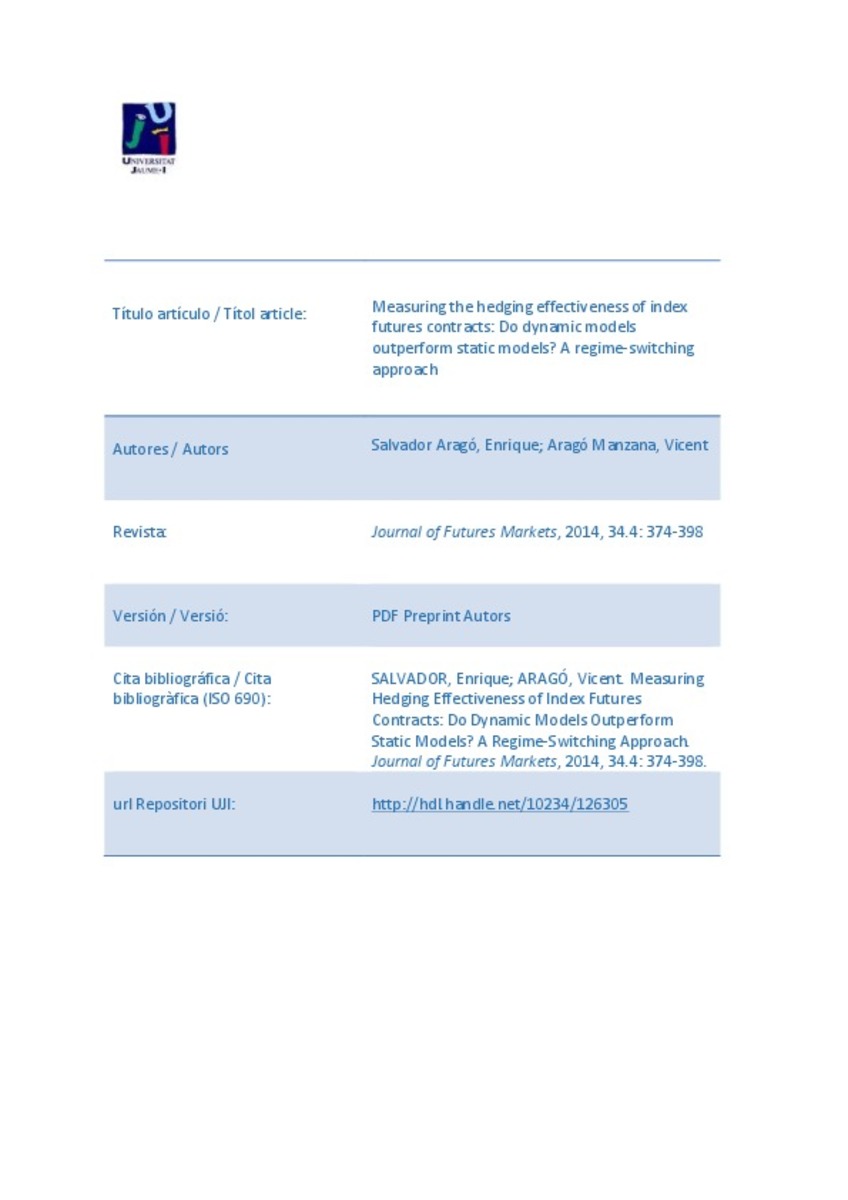Mostrar el registro sencillo del ítem
Measuring the hedging effectiveness of index futures contracts: Do dynamic models outperform static models? A regime-switching approach
| dc.contributor.author | Salvador, Enrique | |
| dc.contributor.author | Aragó, Vicent | |
| dc.date.accessioned | 2015-07-06T10:39:43Z | |
| dc.date.available | 2015-07-06T10:39:43Z | |
| dc.date.issued | 2015-07-06 | |
| dc.identifier.issn | 0270-7314 | |
| dc.identifier.uri | http://hdl.handle.net/10234/126305 | |
| dc.description.abstract | This paper estimates linear and non-linear GARCH models to find optimal hedge ratios with futures contracts for some of the main European stock indexes. By introducing non-linearities through a regime-switching model, we can obtain more efficient hedge ratios and superior hedging performance in both in-sample and out-sample analysis compared with other methodologies (constant hedge ratios and linear GARCH). Moreover, non-linear models also reflect different patterns followed by the dynamic relationship between the volatility of spot and futures returns during low and high volatility periods. | ca_CA |
| dc.format.extent | 22 p. | ca_CA |
| dc.format.mimetype | application/pdf | ca_CA |
| dc.language.iso | eng | ca_CA |
| dc.relation.isPartOf | Journal of Futures Markets, 2014, 34.4: 374-398 | ca_CA |
| dc.rights | © 2013 Wiley Periodicals, Inc. | ca_CA |
| dc.rights.uri | http://rightsstatements.org/vocab/InC/1.0/ | * |
| dc.subject | Futures indices | ca_CA |
| dc.subject | Dynamic hedging | ca_CA |
| dc.subject | Hedging Effectiveness | ca_CA |
| dc.subject | Markov Regime Switching | ca_CA |
| dc.subject | Asymmetric volatility | ca_CA |
| dc.subject | Non-linear GARCH | ca_CA |
| dc.title | Measuring the hedging effectiveness of index futures contracts: Do dynamic models outperform static models? A regime-switching approach | ca_CA |
| dc.type | info:eu-repo/semantics/article | ca_CA |
| dc.identifier.doi | 10.1002/fut.21598 | |
| dc.rights.accessRights | info:eu-repo/semantics/openAccess | ca_CA |
| dc.relation.publisherVersion | http://onlinelibrary.wiley.com/doi/10.1002/fut.21598/full | ca_CA |
| dc.type.version | info:eu-repo/semantics/submittedVersion |
Ficheros en el ítem
Este ítem aparece en la(s) siguiente(s) colección(ones)
-
COFIN_Articles [215]







